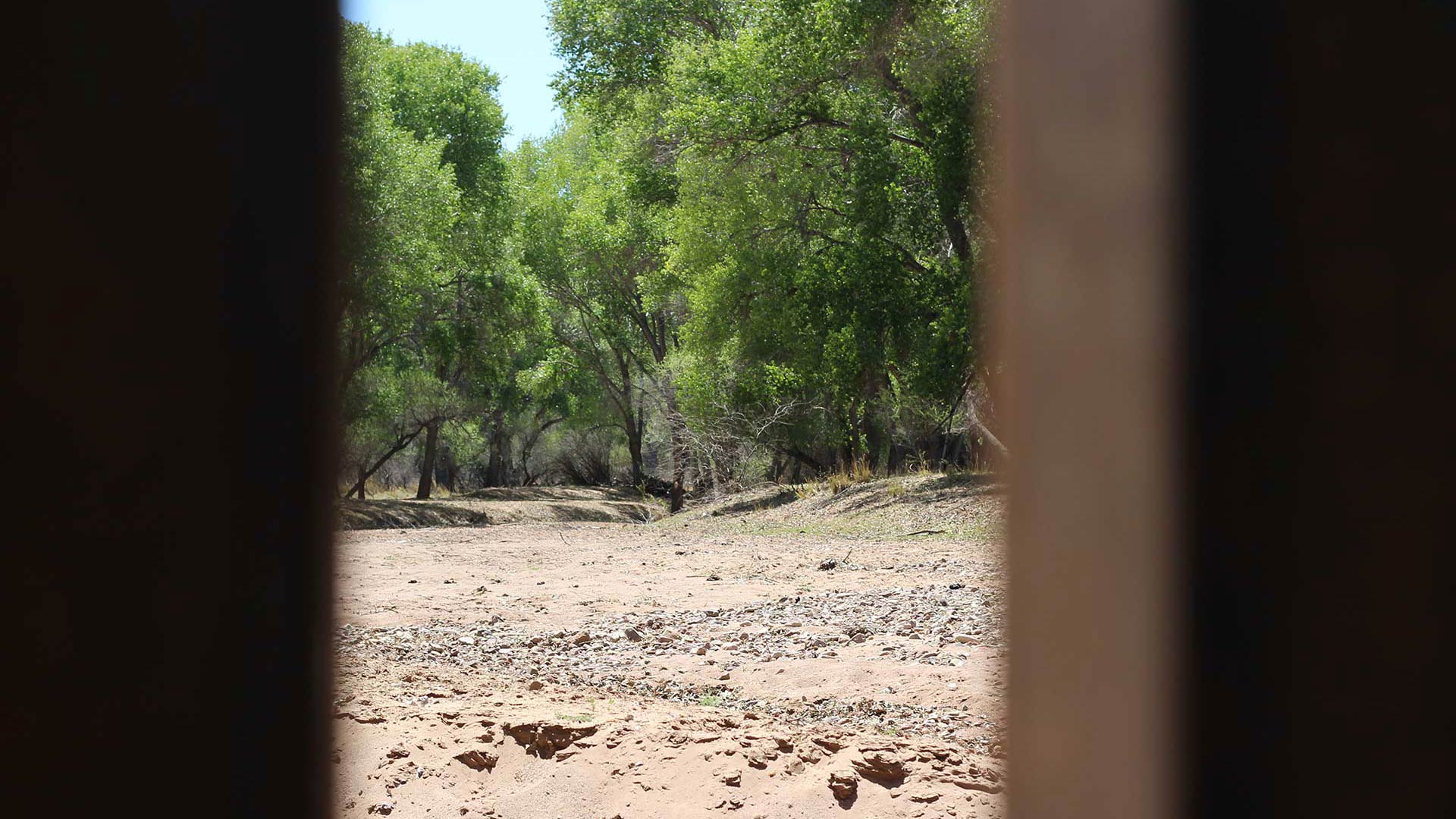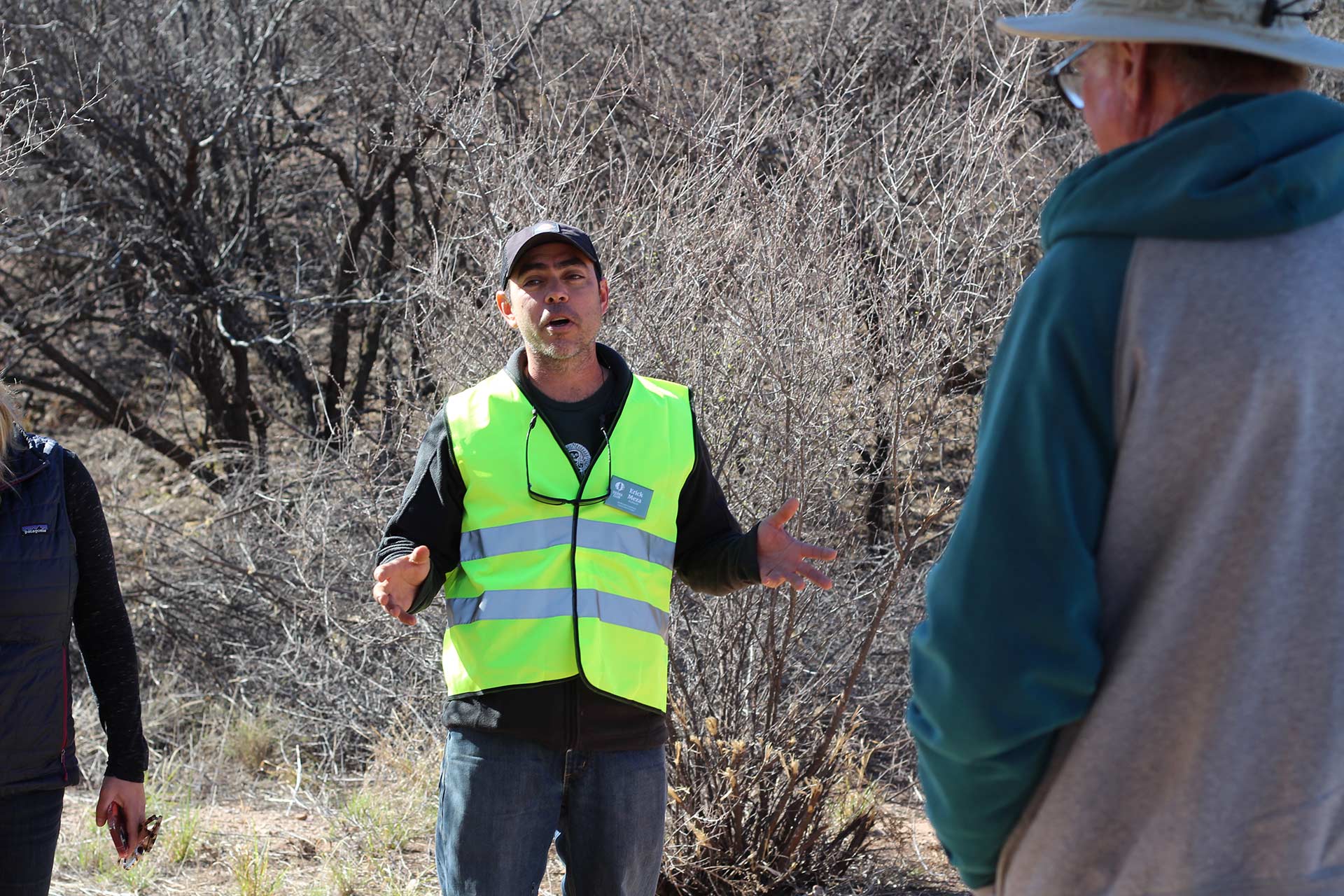 Looking through the rusted-steel border wall into Mexico, at the San Pedro River bed.
Looking through the rusted-steel border wall into Mexico, at the San Pedro River bed.
The Department of Homeland Security (DHS) has agreed to stop further border wall construction and address environmental damage in response to litigation challenging the illegal transfer of military construction funds.
Under a legal settlement filed in a federal court on Monday, July 17, the Sierra Club and Southern Border Communities Coalition (SBCC) represented by the American Civil Liberties Union Foundation (ACLU) and others, settled two-long standing lawsuits that challenged the Trump Administration’s transfer of Defense and Treasury Department funds, to build parts of the border wall in fiscal years 2019 and 2020.
The lawsuits argued that the action was beyond legal power and in violation of the United States Code, the National Environmental Policy Act and several other statutes.
It also settles relevant cases in California, New Mexico and other states.
“The Trump border wall construction, done against the will of Congress and held illegal by federal courts, catastrophically harmed natural resources and communities in the US-Mexico border region,” said Cecilia Wang deputy legal director for the ACLU and lead counsel in the Sierra Club v. Biden cases, in a press release.
The environmental groups brought on this suit in February 2019, in response to Trump’s declaration of a national emergency on the southern border which allocated resources from 10 U.S.C., Section 12302, 10 U.S.C., Section 1284(b)(7) and 10 U.S.C., Section 2802.
In January 2021, President Biden declared that no more American taxpayer dollars would be used to construct a border wall and active construction was paused shortly thereafter as well as the use of obligated funds.
The Secretary of Defense and Secretary of Homeland Security were ordered to compile information on the status and completion of each project as well as the funds allocated since February 15, 2019.
60 days after Biden’s proclamation, both agencies in consultation with the Attorney General and other officials developed a plan for remediation and in April 2021, the Department of Defense (DOD) decided to cancel all border wall projects pursuant to 10 U.S.C., Section 1284(b)(7) and 10 U.S.C., Section 2802.
In June 2021, both the DoD and DHS completed their plans for the redirection of funds known as the Border Wall Plan. This plan canceled existing and new construction in the § 284 and §2802 Project Areas, funding by the Treasury Forfeiture Fund, redirected about $2.2 billion DOD military construction funds as we all plan to fund remediation work in those areas.
In July 2022, the DHS organized remediation in the § 284 and §2802 project areas into three sequential phases.
Remediation
The settlement totals an estimated $1.62 billion in remediation-related funding which includes: restoration of nearly $430 million in funds taken from DOD projects in eight states, $45 million for mitigation of harm caused by the border wall and wildlife protection, $25 million for California to purchase 1,291 acres for conservation, $1.1 million to study the border wall’s impact on endangered and at-risk species and $300,000 to study impacts of DHS lighting.
Borderlands coordinator for the Sierra Club Erick Meza said the real work starts now.
“We’re excited because this is a lot of money that was leftover from those construction projects, now it’s going to go for restoration of some of the environmental damage,” Meza said.
According to the settlement, DHS will prioritize the use of fiscal year 2020 and 2021 funds to close out and begin remediation work in the § 284 and §2802 project areas.
 Borderlands coordinator for the Sierra Club, Erick Meza, says a few words before the annual Border BioBlitz begins on Saturday, April 1.
Borderlands coordinator for the Sierra Club, Erick Meza, says a few words before the annual Border BioBlitz begins on Saturday, April 1.
Phase one, has authorized the U.S. Army Corps of Engineers to perform limited safety measures. In February 2022, it was estimated that the total cost of activities would be $50 million.
The focus for phase two’s remediation work would prioritize projects necessary to avert further environmental damage including invasive plant species management, decommission existing water wells and temporary roads, erosion control and other efforts in the interest of public safety. The most costly phase, DHS estimates the cost to be about $1.1 billion.
Phase two will also remediate the southern end of the Arizona National Scenic Trail, near border monument 102.
The last phase looks to offset impacts of border wall construction in the specified project areas including environmental mitigation projects, allocating $45 million.
“Phase three is where they’re going to be allowing some money to go specifically (to) priority areas that we have recognized because (of) the presence of endangered species,” Meza said.
This phase prioritizes the monitoring of endangered and at-risk species such as Peninsular bighorn sheep, Sonoran Desert Pronghorn, Mexican gray wolf, jaguar and ocelot.
Meza said environmental groups hope to see CBP receive special training to help them recognize their environmental impact from field work.
Conditional
As part of the agreement, DHS will restore funding to military construction projects in California, Colorado, Hawaii, Maryland, New Mexico, New York, Oregon,Virginia and Wisconsin. In addition to the removal of remaining construction materials, DHS will also install passages for wildlife in the project areas under consultation between specified parties and officials within the U.S. Department of the Interior. In the event that larger wildlife passages must be closed, DHS must notify the Sierra Club and SBCC within 48 hours.
The passages are to remain open for an initial period of two years.
DHS has agreed not to install additional fencing in the passages unless and until the agency completes an environmental planning process.
“Now there is a commitment that if there is any other type of construction going on or any type of plan around the border, they will have to comply with NEPA, which is the National Environmental Protection Act, which was not being done in the past,” Meza said.
Compliance must also be completed with the Endangered Species Act (ESA), the National Historic Preservation Act (NHPA) and other application regulations.
The agreement states that the NEPA analysis will examine alternatives to the proposed actions including impact on species, in which case DHS is to prepare an Environmental Assessment (EA) and Environmental Impact Statement (EIS).
The agency has also agreed to open stormwater gates full time and mitigate lighting in the project area in regard to the Yuma 1 border area, near the Andrade Port of Entry in Yuma County. DHS agrees to consult with the United States Fish and Wildlife Service (USFWS) on top of environmental planning if any new lighting is proposed.
If the USFWS finds that the lights are negatively impacting ESA-listed species, DHS agrees to modify or remove existing lighting. Additionally, DHS agrees to conduct a study funded by fiscal year 2020 or 2021 to evaluate lower temperature or red spectrum lighting to reduce environmental impact.
The study should not exceed $300,000.
New roads will not be constructed in the project areas using challenged funds unless it is recommended by the responsible federal land management agency. Again, DHS would be required to complete an environmental planning process consistent with NEPA, the ESA and NHPA.
The agreement does permit the reparation of existing roads.
Fleeting
The agreement does not apply to border wall construction from other funds, appropriated by Congress, nor does it offer a permanent solution.
Meza said if a future administration is able to obtain some other type of funding, DHS might be allowed to continue construction in the listed areas.
“There are some other sections that didn’t get this protection, for example in the Rio Grande or Friendship Park in the Tijuana - San Diego area,” Meza said.
“This settlement is not only about holding the U.S. government accountable for abuse of power but also about upholding the human right of all border residents to be equal under the law,” said border policy counsel of SBCC Ricky Garza, in a press release.
Meza said environmental groups will continue to monitor and ensure the follow-through of the agreement.

By submitting your comments, you hereby give AZPM the right to post your comments and potentially use them in any other form of media operated by this institution.